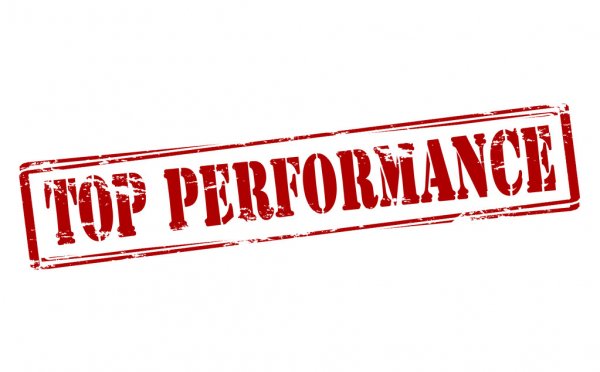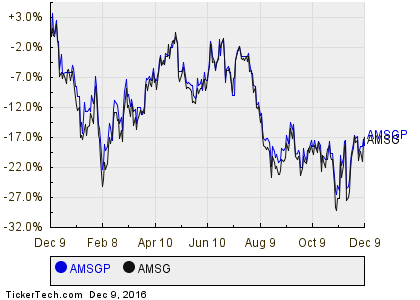Contents
In India, coffee is traditionally grown in the Western Ghats spread over Karnataka, Kerala and Tamil Nadu. Coffee cultivation is also being expanding rapidly in the nontraditional areas of Andhra Pradesh and Odisha as well as in the North East states. Coffee in India is grown under a canopy of thick natural shade in ecologically sensitive regions of the Western and Eastern Ghats.
The government also supports the non-traditional coffee-growing regions under Coffee Development Programmes . Under various export promotion initiatives, transit and freight assistance are provided to help maximize export earnings. Hebbar also shared that the company sources the animal poop from plantations located close to forest from where https://1investing.in/ civet cats come to eat the ripest coffee bean cherries. The former constitutes the high quality blends producing superior taste, aroma and flavour and the latter is the low quality and cheaper blends resulting in a bitter brew, with a musty flavour and less body. Because of this, high quality coffees consist of cent per cent Arabica beans.
“Civet cat eats flesh of the coffee cherries and not the bean. Natural enzymes in civet’s stomach enhances the bean flavour and that’s why this coffee is unique,” he said. Others include Arabica Plantation Coffee grown in the Mysore, Coorg, Biligiris and Shevaroys regions.
Which country is the largest producer of coffee in the World.
The state of Rondonia, on the border with northern Bolivia, is the largest producer of Robusta. Brazil produces almost one-third of the world’s coffee, with 3,558,000 metric tonnes produced. Stagnant water is harmful and the crop is grown on hill slopes at elevations from 600 to 1,600 metres above sea level. Frost, snowfall, high temperature above 30°C and strong sun shine is not good for coffee crops and is generally grown under shady trees. The story goes that an Indian pilgrim to Mecca smuggled seven beans back to India from Yemen in and planted them in the Chandragiri hills of Karnataka. The increasing production costs, including fertilizers and labour costs, are expected to reduce growers’ current gains from increased prices and slow down investment in production.

It is highly priced because it is claimed to be more nutritious and high cost involved in sourcing the animal dropping, wastage during processing and quality certification. IAS4Sure WikiIAS notes covers all newspapers, PIB, government reports etc. and provides you crisp notes in simple language. It produces about 2,249,010 metric tons of Coffee per year and the Coffee Plantation covers about 27,000 square km in the country with 74% Arabica and 26% Robusta. In India, the first plant of coffee was planted in Baba Budan Hills, Karnataka. UP B.Ed Joint Entrance Examinationallotment result & counselling schedule released.
India is 6th largest coffee producer in the world with 4% share after Brazil, Vietnam, Colombia, Indonesia and Ethiopia. The country exports 5.7 billion pounds of coffee each year, according to the ICO. In fact, Brazil has remained the world’s largest exporter of coffee for over 150 years. The total area of coffee cultivation is estimated around 4,000 square km with a total production of 264,000 tons per year. The Government of India took the initiative to provide subsidies to the farmers between US$ 2,500-US$ 3,500 per hectare for developing coffee in the traditional areas. Additional assistance for water augmentation, equipment, marketing, and promotion is also provided under the schemes.
Upcoming Exams
Coffee contributes significantly to sustain the unique bio- diversity of the region and is also responsible for the socio-economic development in the remote, hilly areas. It was during 18th century that the commercial plantations of coffee were started, thanks to the success of British entrepreneurs in conquering the hostile forest terrain in south India. India is the only country in the world where the entire coffee cultivation is grown under shade, hand-picked and sun dried. Brazil, which is the world’s biggest exporter of coffee, is ranked 15th.

Coffee is one of the world’s most popular commodities, and as of 2020, the coffee market was valued at around US$ 466 billion. India majorly exports Robusta coffee beans, a coffee bean species with low acidity and high bitterness compared to Arabica coffee. Apart from green coffee beans, preparations of coffee (31% of which is instant coffee) also have a significant share in India’s export basket. Almost one-third of the country’s total coffee exports constitute instant coffee. Over the past 10 years, until FY20, instant coffee has experienced a CAGR of 4%.
The country has the largest economy and is the leading producer and exporter of coffee, growing over one-third of the world’s coffee supply. In Karnataka, the increase in production is more pronounced in the district of Hassan with 46.28% followed by Chikmagalur 12.64% and Coorg 5.22% . Between arabica and robusta, the increase is more in robusta in all the three districts compared to arabica.
Brazil is the largest producer of coffee in the world, followed by Vietnam and Colombia. As per World Economic Forum, India was the _______ largest coffee producer in the world in 2020. India, which did not figure in the top 20, is the seventh largest exporter of coffee.
For quite a considerable period, the plants remained as a garden curiosity and spread slowly as back yard plantings. Its fabled coffee culture means the country ranks as one of the biggest caffeine fans globally, beating the United Kingdom and the United States into the top 20, according to Time Out Croatia. In not-so-good news for coffee drinkers in India as it is not ranked among the top 20 coffee drinking countries of the world, according to a survey. The Coffee production of the country is around 234,000 tons per year. The Coffee Board of India is an organization managed by the Ministry of Commerce and Industry and was established in 1942.
Drop in Coffee Output
The robusta production increased by 59% in Hassan followed by 20% in Chikmagalur and 7.21% in Kodagu district. In arabica the increase is in Hassan (40%) and Chikmagalur (7%) while in Coorg there was a marginal decline of 1.5%. Good rainfall during October to March helped in moisture retention for longer period which in-turn helped in the production of more bearing wood for the crop during the current season. Karnataka is placed at 81,270 tonnes of arabica and 132,900 tonnes of robusta totaling 214,170 tonnes. Overall, there is 11.79% increase over the previous season’s production in Karnataka with a break up of 9.90% in arabica and 12.99% in robusta. India is the third-largest producer and exporter of coffee in Asia and the sixth-largest producer and fifth-largest exporter of coffee in the world.
The increase is mainly from Andhra Pradesh and Orissa (53.70%). Bean availability in Vietnam has fallen as shipments rose 17% to 1.13 million tons in January-July from a year earlier, according to customs data. The increase in exports has been aided by an improving supply of containers and ships, but may be difficult to sustain given the shrinking stockpiles. Coffee is predominantly an export oriented commodity and 65% to 70% of coffee produced in the country is exported while the rest is consumed within the country. Heavy rains in July and August in coffee producing states of Karnataka, Kerala and Tamil Nadu is estimated to cut coffee crop size by 10 per cent, producers said. The summer shower in the coffee growing regions of Karnataka are called _____________.
- Vietnam is the second largest producer of Coffee after Brazil with Total production of about 1,300,000 tons per year.
- Bababudangiris in Karnataka is the heart of coffee plantations in India.
- Specialty coffee is distinguished by careful cultivation practices, a clear origin, a routine of plucking and special processing, branding, handling, and appearance.
- Additional assistance for water augmentation, equipment, marketing, and promotion is also provided under the schemes.
However, such farms account for just over half of all land used for coffee production and a minority of all coffee produced. The country accounts for 3.14% ( ) of the global coffee production. Coffee is produced in India in the amount of 329,100 metric tonnes . Coffee is the world’s second most valuable commodity and an estimated 25 million people around the world depend on its production for their livelihood.
The counseling of the candidates who had qualified the written exam will be held between 30th September 2022 to 25th November 2022. The UP B.Ed. JEE Resultfor the written exam was declared on 5th August 2022. On completion of the counselling round the candidates will be able to secure admission to the B.Ed.
Vietnamis the second-largest coffee producer, accounting for roughly 20 percent of the world’s coffee production. The maximum coffee producing nation accounted for 40 percent of the global production of coffee. Millions of kilograms of coffee beans are each produced by the top producing nation that make their way into the hands of eager consumers. The Civet coffee, also called as Luwark coffee, is expensive because of uncommon method of producing such a coffee. There are over 170,000 coffee farms in India, cultivating nearly 900,000 acres of coffee trees.
Exams
Most of its production is done in the southern part of the country. The scheme aims to maximize export earnings by enhancing the market share of value-added coffees and high-value differentiated coffees in important high-value international markets. The government provides an export incentive of Rs. 2/- per kg. For exporting high-value green coffees to high-value markets such as the USA, Canada, Japan, Australia, New Zealand, South Korea, Finland, and Norway. India exports coffee to more than 50 countries around the world. Italy, Germany, Belgium, and the Russian Federation are the largest importers of coffee from India, with an average total share of about 45%.
The other coffee importing countries are Libya, Poland, Jordan, Malaysia, the US, Slovenia, and Australia. Brazil is the top coffee-producing countryaccounting for 40 percent of the global coffee supply. The dwindling reserves and poor harvest outlook come at a time when global coffee consumption is recovering from a virus-induced slump. Benchmark robusta prices have surged 17% from a 10-month low in the middle of July on supply worries from Brazil to Africa.
Top 10 Largest Coffee Producing Countries in the World
A senior Coffee Board official also confirmed that civet cat coffee is being produced in small quantities in parts of Coorg and Chamarajnagar districts. Early this year, The Coffee Board has released a new Arabica coffee variety ‘Chandragiri’ for commercial cultivation into the Indian coffee tracts. The variety is known for its high field tolerance to leaf rust disease and its superior bean quality. High growth in India is because of low base as the espresso market is much smaller as compared to the world. Indian coffee has created a niche for itself in the international market and the Indian Coffees are earning high premium, particularly Indian Robusta which is highly preferred for its good blending quality. Arabica Coffee from India is also well received in the international market.


